On what should’ve been Wimbledon finals weekend, we thought it was the perfect time to serve up some aces from our Playmakers collection of locally made sports products. Did you know that many a Wimbledon legend’s racket was made in Horbury? Find out about our proud tradition of sports manufacturing and how local innovation made its mark on the courts of SW19.
Breaking into the game
In 1870 a saddler’s apprentice from Horbury risked all his life savings to buy his own business. It was a gamble that would pay off handsomely. After 10 years in saddlery, William Sykes turned his leather working skills to making footballs in the start of a venture that would see Sykes become chairman of a major international company, and turn Horbury into a centre of high tech, high quality sports manufacturing, home in its heyday to possibly the largest sports equipment factory in the world.
William Sykes Ltd soon expanded from football into other sports, beginning with cricket and tennis. In 1896, having outgrown his original premises, Sykes proudly opened the Yorkshire Athletic Manufactory. By 1903 the new factory’s production lines included 21 different models of racket.
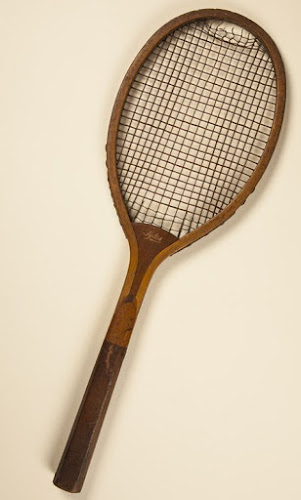 |
| Handicap racket, William Sykes Ltd, c. 1880-1920. The wooden grip, small racket head size and convex wedge are characteristic of rackets from the turn of the century. |
The star of the tennis range was the company’s premium racket, the EDB, named for and produced to the instructions of Ernest Douglas Black. Known as Edmund, Black had competed in Great Britain’s first ever Davis Cup tie, playing the competition founder, Dwight Davis of the USA, in Boston in 1900. The EDB was one of the earliest in a long line of Sykes products to be endorsed by elite sports people. Further tennis stars would follow suit in future.
 |
| EDB Special racket, William Sykes Ltd |
Expansion
Business continued to thrive after William Sykes Snr’s death in 1910, his two sons overseeing further expansion. In 1926 the company acquired the London-based tennis firm, Jefferies, extending their racket range further.
 |
| Raleigh Super racket, late 1920s. This racket from shortly after the acquisition of Jefferies is marked with both companies’ names. |
 |
| Advertising poster for the William Sykes Ltd racket range. The company is now located in Horbury & London. |
By 1933, as attendance at Wimbledon exceeded 200,000 and TV cameras were allowed at the All England Club for the first time, Sykes were able to meet rising demand from tennis fans with production now running to 50,000 rackets a year. With business booming, it was necessary to move into bigger premises again. Production at Albion Mill began in 1936 with an ever increasing range. In fact, Sykes supplied everything you needed for a match, from the balls to the net and posts.
Rallying the troops
Only shortly after the publication of the summer 1939 catalogue, the outbreak of the Second World War in September disrupted Sykes’ production as the company turned almost all of its capacity to the war effort, its leather and woodworking expertise in particular proving vital. The 1000 strong workforce at Horbury produced a dizzying array of equipment from bayonets and ammunition boxes to sand goggles and skis. Among the many and varied products supplied to the War Office were snow shoes, made using the same steam bending technique as the wooden frame of a tennis racket.
Sykes’ competitors, Slazenger, were also affected by the war, with their London based factories suffering serious bomb damage. In 1942 the two former rivals joined forces. The merger of Sykes and Slazenger married the massive manufacturing capacity at Horbury with Slazenger’s brand power, not least its long standing association with the Wimbledon championships. Although the first products made after the merger kept the Sykes logo, the Slazenger name soon took over. Shortly after the war, Slazenger moved all of its production to Yorkshire. Its long established and prestigious Challenge and Demon rackets were among the many ranges now made in Horbury. Indeed, the only Slazenger products not made at the factory were tennis balls, and these were produced down the road at Barnsley.
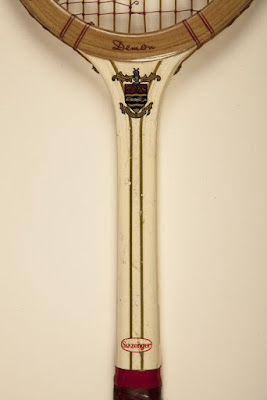 |
| Slazenger made Demon brand rackets from 1880 – 1966. |
 |
| Slazenger Challenge, c. 1975 |
Innovation and domination
 |
| The June 1962 edition of the Dunlop Gazette staff magazine included an in-depth look at the Horbury factory. |
By the 1970s though, sales of wooden rackets were in decline, with players favouring new, lightweight materials like aluminium and carbon fibre. In response, Dunlop turned to its new state of the art Research and Development Centre, opened in Horbury in 1978. Its team of expert engineers were tasked with revolutionising the tennis racket and re-establishing Dunlop as the go-to brand for amateurs and Wimbledon champions alike.
Their pioneering solution was an injection moulded racket using a material known as Grafil, a hard-wearing compound of graphite and nylon. Melted Grafil was injected into racket moulds around a metal core. The core had a lower melting point than Grafil and, once the outside frame was cooled and set, the metal was heated and melted out of the mould to leave behind a hollow frame.
The result was a racket that was both robust and lightweight - 50% stronger and 12% more powerful than traditional wooden frames. The Dunlop Max 200G was ground breaking. No surprise then that it received several prestigious engineering awards and attracted such giants of the game as Steffi Graf and Martina Navratilova. Graf played with the 200G when she won her first Grand Slam title at the French Open in 1987. In total she won 22 major singles titles and she is the only player to have achieved a calendar Golden Slam, winning all four major titles and an Olympic gold medal in the same year. Her triumphs kept the 200G in the news into the 1990s.
 |
| Dunlop Max 200G |
In 1983, John McEnroe switched to the 200G. The racket’s association with his star quality saw sales rocket from 20,000 to 200,000. By 1988 there were no wooden rackets in use at Wimbledon.
I used to think that I might’ve been stringing one of John McEnroe’s rackets. I was so proud of that. It made Wimbledon exciting for me. When he used to smash his rackets, I would think of how much trouble had gone into making it!
Lynne Holroyd, former Slazenger employee
End of an era
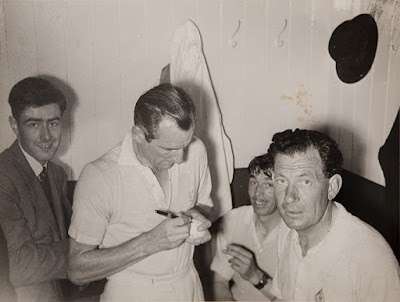 |
| Fred Perry playing at the Slazenger Sports and Social Club and signing autographs, 1950 |



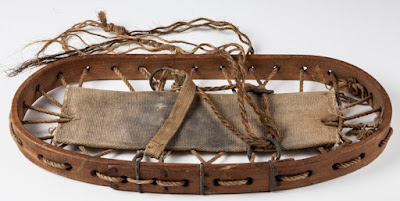
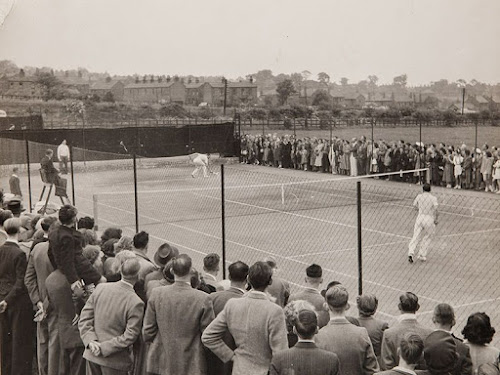
I have a vintage (1930's) Dunlop White Flash tennis racket. Might any museum or archive be interested in it. I don't want to sell it if it can be of interest to anybody. Contact: Steve ... greatorex_s@sky.com
ReplyDelete